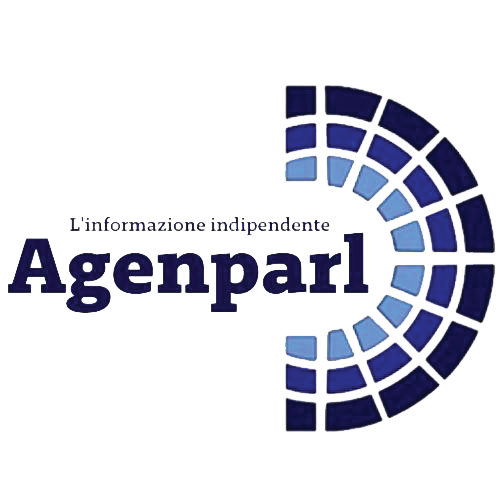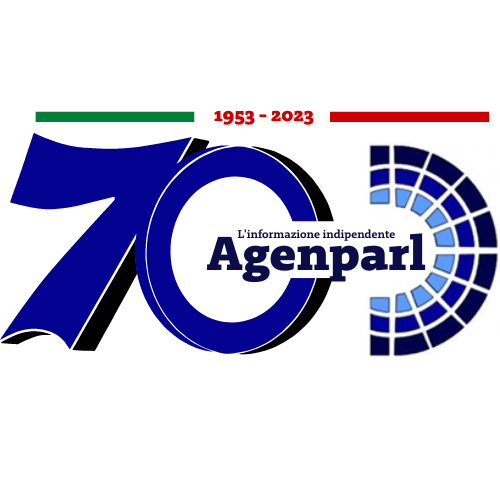 (AGENPARL) - Roma, 20 Giugno 2025
(AGENPARL) - Roma, 20 Giugno 2025(AGENPARL) – Fri 20 June 2025 Statement.png
INTERNATIONAL ATOMIC ENERGY AGENCY
20 June 2025
IAEA Director General’s Statement to the UN Security Council
(As prepared for delivery)
Attacks on nuclear sites in the Islamic Republic of Iran have caused a sharp degradation in nuclear safety and security in Iran. Though they have not so far led to a radiological release affecting the public, there is a danger this could occur.
The International Atomic Energy Agency has been monitoring closely the situation at Iran’s nuclear sites since Israel began its attacks a week ago. As part of its mission, the IAEA is the global nerve centre for information on nuclear and radiological safety, and we can respond to any nuclear or radiological emergency.
Based on information available to the IAEA, the following is the current situation at Iran’s nuclear sites. Which I offer as a follow up to my most recent report to this Security Council.
The Natanz enrichment site contains two facilities. The first is the main Fuel Enrichment Plant. Initial attacks on the 13th of June targeted and destroyed electricity infrastructure at the facility, including an electrical sub-station, the main electric power supply building, and emergency power supply and back-up generators. On the same day, the main cascade hall appears to have been attacked using ground-penetrating munitions.
The second facility at Natanz is the Pilot Fuel Enrichment Plant. It consists of aboveground and underground cascade halls. On the 13th of June the above-ground part was functionally destroyed and the strikes on the underground cascade halls were seriously damaging.
The level of radioactivity outside the Natanz site has remained unchanged and at normal levels, indicating no external radiological impact on the population or the environment.
However, within the Natanz facility there is both radiological and chemical contamination. It is possible that Uranium isotopes contained in Uranium Hexafluoride, Uranyl Fluoride and Hydrogen Fluoride are dispersed inside the facility. The radiation, primarily consisting of alpha particles, poses a significant danger if inhaled or ingested. This risk can be effectively managed with appropriate protective measures, such as using respiratory devices. The main concern inside the facility is chemical toxicity.
Fordow is Iran’s main enrichment location for enriching uranium to 60%. The Agency is not aware of any damage at Fordow at this time.
At the Esfahan nuclear site, four buildings were damaged in last Friday’s attack: the central chemical laboratory, a uranium conversion plant, the Tehran reactor-fuel manufacturing plant, and the enriched uranium metal processing facility, which was under construction.
No increase of off-site radiation levels was reported. As in Natanz, the main concern is chemical toxicity.
The Khondab Heavy Water Research Reactor under construction in Arak, was hit on the 19th of June. As the reactor was not operational and did not contain any nuclear material, no radiological consequence is expected. The nearby Heavy Water Production Plant is also assessed to have been hit, and similarly no radiological consequence is expected.
As stated in the IAEA’s update of the 18th of June, at the Tehran Research Center, one building, where advanced centrifuge rotors were manufactured and tested, was hit. At the Karaj workshop, two buildings, where different centrifuge components were manufactured, were destroyed. There was no radiological impact, internally or externally.
Let me now refer to the Bushehr Nuclear Power Plant. This is the nuclear site in Iran where the consequences of an attack could be most serious. It is an operating nuclear power plant and as such it hosts thousands of kilograms of nuclear material. Countries of the region have reached out directly to me over the past few hours to express their concerns, and I want to make it absolutely and completely clear: In case of an attack on the Bushehr Nuclear Power Plant a direct hit could result in a very high release of radioactivity to the environment.
Similarly, a hit that disabled the only two lines supplying electrical power to the plant could cause its reactor’s core to melt, which could result in a high release of radioactivity to the environment. In their worst-case, both scenarios would necessitate protective actions, such as evacuations and sheltering of the population or the need to take stable iodine, with the reach extending to distances from a few to several hundred kilometres. Radiation monitoring would need to cover distances of several hundred kilometres and food restrictions may need to be implemented.
Any action against the Tehran Nuclear Research Reactor could also have severe consequences, potentially for large areas of the city of Tehran and its inhabitants. In such a case, protective actions would need to be taken.
I will continue to provide public updates about the developments at all these sites and their possible health and environmental consequences.
The Agency is, as madame Undersecretary kindly reminded, and will remain present in Iran and inspections there will resume, as required by Iran’s safeguards obligations under its NPT Safeguards Agreement, as soon as safety and security conditions allow.
In this context, let me restate that the safety of our inspectors is of utmost importance. The host country has a responsibility in this regard, and we expect every effort to be made to ensure that their security and their communication lines with the IAEA headquarters will be maintained.
As stated in my most recent report to the Agency’s Board of Governors and based on inspections conducted at the relevant facilities since then, Iran’s uranium stockpiles remain under safeguards in accordance with Iran’s comprehensive safeguards agreement. You may recall that more than 400kg of this stockpile is uranium enriched up to 60% U-235. It is essential that the Agency resumes inspections as soon as possible to provide credible assurances that none of it has been diverted.
Importantly, any special measures by Iran to protect its nuclear materials and equipment must be done in accordance with Iran’s safeguards obligations and the Agency.
Therefore, it is of paramount importance that the Agency’s inspectors are allowed to verify that all relevant materials, especially those enriched to 60%, are accounted for. Beyond the potential radiological risks, attacks on such materials would make this effort of course more difficult.
Madame President,
The IAEA has consistently underlined, as stated in its General Conference resolution, that armed attacks on nuclear facilities should never take place, and could result in radioactive releases with grave consequences within and beyond the boundaries of the State which has been attacked.
I therefore again call on maximum restraint. Military escalation threatens lives and delays indispensable work towards a diplomatic solution for the long-term assurance that Iran does not acquire a nuclear weapon.
Madame President,
The presence, support, analysis and inspections of technical experts are crucial to mitigating risks to nuclear safety and security – that is true during peacetime and even more so during military conflict.
For the second time in three years, we are witnessing a dramatic conflict between two UN and IAEA Member States in which nuclear installations are coming under fire and nuclear safety is being compromised. The IAEA, just as has been the case with the military conflict between the Russian Federation and Ukraine, will not stand idle during this conflict.
As I stated in this chamber just a few days ago, I am ready to travel immediately and to engage with all relevant parties to help ensure the protection of nuclear facilities and the continued peaceful use of nuclear technology in accordance with the Agency mandate, including by deploying Agency nuclear safety and security experts, in addition to our safeguards inspectors in Iran, wherever necessary.
For the IAEA to act, a constructive, professional dialogue is needed. I urge the Members of this Council to support us in making it happen sooner rather than later.
The IAEA must receive timely and regular technical information about affected nuclear facilities and their respective sites. I urge in this regard the Iranian regulatory authorities to continue a constructive dialogue with the IAEA Incident and Emergency Centre, which has been operating 24/7 since the beginning of this conflict.
Nuclear facilities and material must not be shrouded by the fog of war.
Yesterday there was an incorrect statement to the media by an Israeli military official that Bushehr Nuclear Power Plant had been attacked. Though the mistake was quickly identified and the statement retracted, the situation underscored the vital need for clear and accurate communication, and the Agency’s unique role in providing it in a technically accurate and politically impartial way is obvious.
Let me conclude by assuring the international community of the IAEA’s continued support at this very grave time.
A diplomatic solution is within reach if the necessary political will is there. Elements for an agreement have been discussed. The IAEA can guarantee, through a watertight inspections system, that nuclear weapons will not be developed in Iran. They can form the basis of a long-standing agreement that brings peace and avoids a nuclear crisis in the Middle East. This opportunity should not be missed. The alternative would be a protracted conflict and a looming threat of nuclear proliferation that, while emanating from the Middle East, would effectively erode the NPT and the non-proliferation regime as a whole.
Follow IAEA on:
About the IAEA
The International Atomic Energy Agency (IAEA) serves as the world’s foremost intergovernmental forum for scientific and technical co-operation in the peaceful use of nuclear technology. Established as an autonomous organization under the United Nations (UN) in 1957, the IAEA carries out programmes to maximize the useful contribution of nuclear technology to society while verifying its peaceful use.
IAEA | Media, Multimedia & Public Outreach Section
Office of Public Information and Communication
______________________
IAEA VIENNA, Wagramer Strasse 5 P.O. Box 100, VIENNA, NA NA Austria
